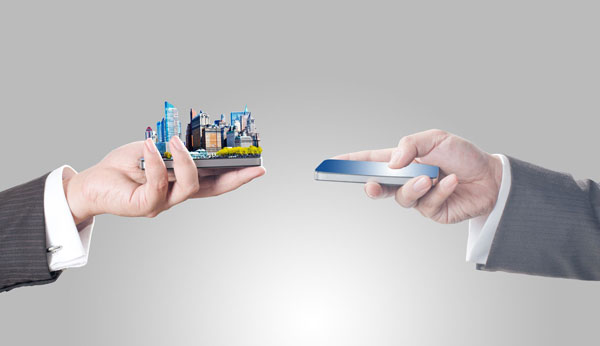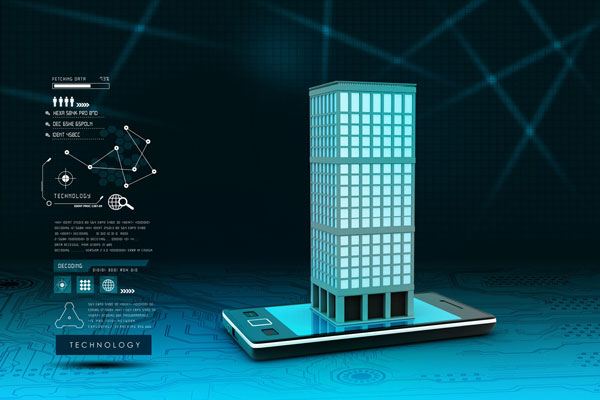
Technological advancements, smart buildings, and integrated software and hardware are significantly altering the role of facilities managers. Those on the job are embracing the ways technology can make buildings and campuses more user-friendly.
A big part of usability depends on accessibility. Technology can and should be integrated to make facilities more accessible to all users.
Defining Compliance
It’s important to note, as does Daniela Bas, director for social policy and development at the UN’s Department of Economic and Social Affairs, the “difference between accessibility and a place that is usable. To have equal access does not mean it is usable. An accessible future means inclusion and inclusion is power.”
Not only does accessibility make public spaces more inclusive to everyone in society, it embraces change in positive ways.
Another reason why FMs should add high-tech solutions to accessibility problems is to be compliant with regulations. “The stakes are high, because non-compliance can have serious consequences for a company,” says Maureen Ehrenberg, international director of JLL’s global Integrated Facilities Management business.
Ensuring compliance is even harder to do when different countries, regions, states and cities vary according to what exactly this means. It adds a “layer of complexity to operational compliance,” according to Ehrenberg.
Not only are the results of non-compliance potentially severe, but it is confusing to follow what’s going on with the regulations. Richard Jowsey, who consults in facilities management, says compliance can never be 100 percent. This is especially so when the way the word is used is either confusing or misleading.
To overcome this confusion, he advises organizations to publish their compliance reports to show that facilities aren’t quite hitting the mark. They need to do better. This is a better option, he argues, than clients reactively penalizing facilities when not receiving a perfect report. Exposing imperfections allows FMs to work at building more compliant procedures and monitoring progress in that direction until issues are resolved.

Setting International Standards
Sandrine Tranchard, at the International Organization for Standardization, says facilities management is a fast-growing discipline around the world, but it lacks awareness.
Things are changing though. Tranchard argues the first two International Standards, ISO 41011 (Facilities management – Vocabulary) and ISO 41012 (Facilities management – Guidance on strategic sourcing and the development of agreements), along with new management system standard ISO 41001 (Facilities management – Management systems – Requirements with guidance for use), will all work towards fostering this awareness.
They will help support the development, implementation and maintenance of facilities management across all industry sectors.
Accessibility Under the Law
In a previous post, we discussed how laws governing accessibility in buildings was a major victory for disabled people specifically, but also for society as a whole.
It has been close to 30 years since the ADA was enacted and, as a result, many modern buildings are equipped with facilities such as ramps, no-step entrances with wider doors, nearby designated parking and specially designed restrooms.
Managers in charge of these new-builds have not had to devote too much time thinking about accessibility issues. Those in charge of older buildings, however, have a trickier job at hand.
Jean Hewitt, at the Centre for Accessible Environments in the UK, says many FMs are frustrated by running buildings where accessibility was not at the forefront of design. Retroactively dealing with this can be costly and disruptive.
These older buildings are often not in compliance with ADA, despite having been renovated since the disabilities law was passed in 1990 and updated 20 years later.
Instead of seeing non-compliance as irreparable, FMs should recognize those issues as ones where they can add significant value to buildings’ users — especially by incorporating technology into the operations.
When tech juggernaut Google recently commemorated the ADA, it posed the question: “What if we could create a more inclusive world for everyone?” Part of the response was to launch the Google Impact Challenge: Disabilities, which pledged “$20M in grants to 29 nonprofits using technology to take on a wide range of accessibility challenges.”
The American Foundation for the Blind has voiced its excitement that tech companies are taking initiative in helping the visually impaired. With 20 million blind or visually impaired people in the US, promoting accessibility is essential.

High-Tech Solutions
One way FMs can improve accessibility for the visually impaired is through Wayfindr. This audio-based navigation app helps people find their way on public transport systems and in retail spaces and other indoor environments. It relies on beacon technology, which is also being employed at Gatwick Airport in the UK.
Nikki Gilliland at Econsultancy writes that the airport is using augmented reality to help passengers find their way. While the intent was to assist all travelers, not necessarily those with disabilities, the technology’s positive consequences have extended beyond the intended task.
The augmented reality wayfinding system is powered by 2,000 indoor beacons, providing an indoor navigation system to help passengers get to where they need to go. It works in a similar way to Google Maps. The technology has the advantage of cutting through language barriers, as international passengers can follow maps visually instead of having to read or listen to directions given in English.
German technology company NavVis has also developed a navigation system to help improve accessibility for people with disabilities. Hannah Szwarc at NavVis writes that, in partnership with a non-profit organization Lebenshilfe Offenburghas, the company helped create a barrier-free digital guidance and navigation system that maps support services facilities and provides 3D data for intuitive movement in buildings.
Using smartphones, facility visitors can navigate when in the building and also access it remotely to plan their route and ensure it’s completely accessible. There is also a voice-command function that can be employed.
Apps that are purpose-built for those with disabilities are helpful in making their lives simpler. But app developers also have a responsibility to make mainstream apps compatible with specialist apps for people with different disabilities, writes Darren Bates at Austin Startups.
He calls for accessibility considerations taking place at the start of app development, so developers can avoid “the ugly bolt-on solutions” of digital products and services extended for use for those with disabilities.
Journalist David M. Perry suggests something similar when he writes about the power of assistive technology. He argues that it should enable the “application of everyday technology to enhance accessibility and fight stigma.”
ICT For Disaster Management
While it is important to fight the stigma disabled people often face in their lives, it is also vital to use technology to accommodate their particular needs. Nowhere is this more pressing a concern than when it comes to disaster management. While everyone involved in a calamitous event is affected, there may be specific requirements to assist those with disabilities.
Deepti Samant Raja at the World Bank Group expresses how information and communication technologies (ICT) can be used at multiple stages during a disaster to assist those with disabilities as well as their families. In a paper titled ‘Bridging the Disability Divide through Digital Technologies’, Raja says ICT can play a role in three specific stages.
Mitigation and preparedness
FMs can raise awareness of potential risks through multiple media channels, such as email, SMS, radio, TV, apps, websites, electronic bulletin boards, social media. Building electronic registries and databases can also be used to identify persons in need of help, and obtain an accurate understanding of specific needs.
Alerts and response
By using ICT, FMs can ensure those affected receive alerts in their chosen format, whether via text, voice, video, radio, social media, web and/or sign language, with captioning and audio description made available. Real-time SMS is also a valuable tool to connect with emergency response teams.
Recovery and reconstruction
In the wake of disaster, those affected need to be able to access electronic data to find missing family or friends, locate accessible shelters and connect with resources to help them.

Universal Design
Part of building in a sound strategy to deal with disasters or emergencies or fighting the stigma faced by disabled people requires resting on the greater guiding principles of universal design.
Rachael Zimmerman at Facilities Net defines this as “an inclusive philosophy that says all spaces should be inherently accessible for all users.”
Universal design goes beyond strict adherence to regulatory compliance and extends into eliminating unintentional stigmatization. An example of this, Zimmerman writes, is a separate wheelchair-accessible entrance.
If the user of this entrance needs to travel to the back of the building to access it or is clearly separated from other users, it is not consistent with universal design. FMs need to consider this to help all users feel they are treated equally. The alternative Zimmerman offers is wide, automatic sliding doors big enough for wheelchairs, strollers or walkers to enter together.
It’s useful to think about accessibility as how people feel when using a building. Monty Munford, at the Telegraph calls this “psychogeography.” He uses the word in a discussion about developing smart cities and extends this logic to buildings. FMs would do well to consider how occupants of a building currently feel when in it and compare that with how they should feel. This will guide important issues surrounding accessibility.
Brick and Mortar With a ‘Brain’
Accessibility is not just about making a building easier to use for those with disabilities. As we have seen with the philosophy of universal design, considering all users of a building will enhance their experience while in it.
This means finding ways to upgrade to smart buildings, a term used for some time now. Arie Barendrecht at Forbes argues it is “loosely tossed around a lot.” He defines it as buildings equipped with network-enabled management systems to help automate operations.
The purpose of these systems is where the value lies. Barendrecht says that smart buildings are about “promoting a greater sense of comfort and ease to employees.” This includes intuitive HVAC and lighting systems, employee devices that connect to the IoT and digitally enhanced means of conserving energy.
Smart buildings are only going to get smarter, says Chris O’Connor, general manager, Internet of Things Offerings for IBM. He gives the example of elevator and escalator designer KONE using IoT data from sensors and systems connected to its equipment, which includes doors and turnstiles, to improve people flow.
While the final example does not speak to accessibility issues facing those living with disabilities, it does highlight the way technology is becoming more integrated into modern buildings to improve the experience of all users.
FMs are at a unique point in the history of the profession. There is much to be learned, but a great deal to gain from becoming a technologically savvy professional. Remembering the key tenets of universal design and enhancing this philosophy with the power of tech will help FMs achieve true accessibility for all users.
Credits:
Natchapon Leungpakorncuteimage
Lee Aik Soon
vadimgozhda
